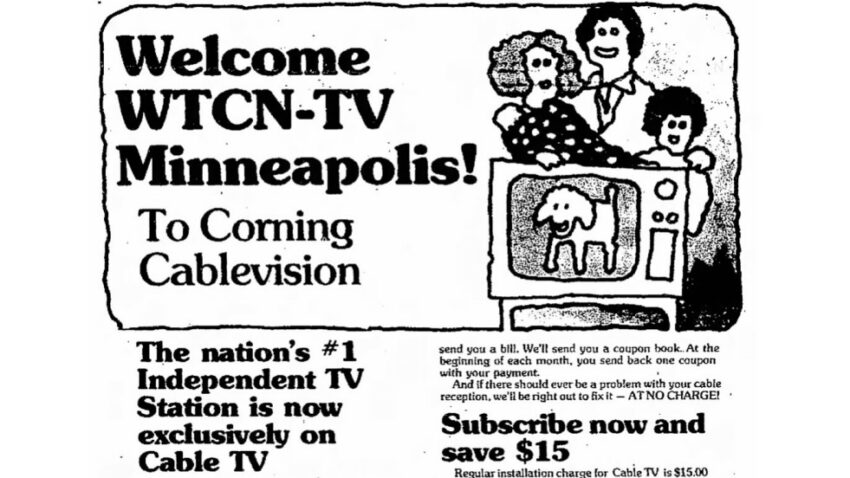If you’re a student of broadcast history, you know that the earliest cable TV systems were established to provide service to communities that couldn’t otherwise receive broadcast signals.
The original goal was to help households get any reception, even if it was only a few channels. Then operators realized they could get even more programming, and more subscribers, by adding channels from other cities, and cable systems began to spring up in larger cities that didn’t have reception problems.
But there weren’t any national cable or satellite channels in the 1960s and early 1970s. The solution was to pipe in TV stations from regional cities using microwave links. Even large cable systems in cities with their own network affiliates were still allowed to import a couple of Independent stations.
That’s how Minneapolis Independent outlet WTCN-TV/11 (now KARE) got on cable in Des Moines in 1974, alongside KBMA-TV/41 (now KSHB) from Kansas City.
WTCN was also on all of the lineups for three proposed cable TV operators that went up for a public vote in Waterloo in 1978.
A search of newspaper archives indicates WTCN had cable carriage in much of Iowa and parts of South Dakota. For example, the Estherville Daily News reported in 1968 that the cable system was working on an antenna to receive WTCN and a 1969 ad confirms they were successful, touting WTCN’s daytime kids programming as a “baby sitting station.”
In South Dakota, WTCN is listed in the 1972 TV listings for Huron, where Denver stations were also carried.
In Wisconsin, Milwaukee’s WVTV was the Independent choice for systems in Oshkosh, Appleton, and Wausau, which touted the station in advertising. WGN-TV from Chicago was also available regionally in Iowa and Wisconsin before it went national on satellite.
Once satellite began to beam Independent stations from coast to coast, all bets were off. Some regional stations were dropped in favor of satellite feeds from bigger cities.
A 1979 Green Bay Press-Gazette feature on cable TV tried to sort it out, with a chart showing the numerous stations available on northeastern Wisconsin systems: KTVU Oakland-San Francisco, KTTV Los Angeles, WOR New York, WSBK Boston, WTCG Atlanta, and no fewer than five stations from Chicago.
It obviously didn’t last. There was too much competition to become a “SuperStation” as new cable channels launched. WGN-TV and WTBS (formerly WTCG) won the battle and achieved national cable carriage in the 1980s and 1990s.
Regionally, many systems replaced WTCN-TV with KMSP after the Minneapolis affiliation shuffle in 1979. In Iowa, that included Ames and Mason City, but the Register reported that that the Des Moines system instead replaced WTCN with WTCG.
KMSP retained cable coverage in most corners of Minnesota until becoming a FOX affiliate in 2002.
Kansas City’s KSHB also retained cable carriage in many southern Iowa communities until becoming an NBC affiliate in 1994.
The “SuperStation” is now mostly a thing of the past, with WTBS having converted itself to cable channel TBS and WGN’s national feed converted to NewsNation.
At last report, DISH Network continued to offer five “SuperStations,” but only in standard definition: KTLA Los Angeles, KWGN Denver, WWOR Secaucus-New York, WPIX New York, and WSBK Boston. The package is grandfathered and no longer available to new customers.
Canada is still big on U.S. SuperStations, however, with WSBK, WPIX, WGN-TV, and KTLA carried on virtually all cable and satellite providers. Some even carry WPCH Atlanta, the successor to the broadcast version of WTBS-TV.
READ MORE: Upper Midwest Broadcast History


